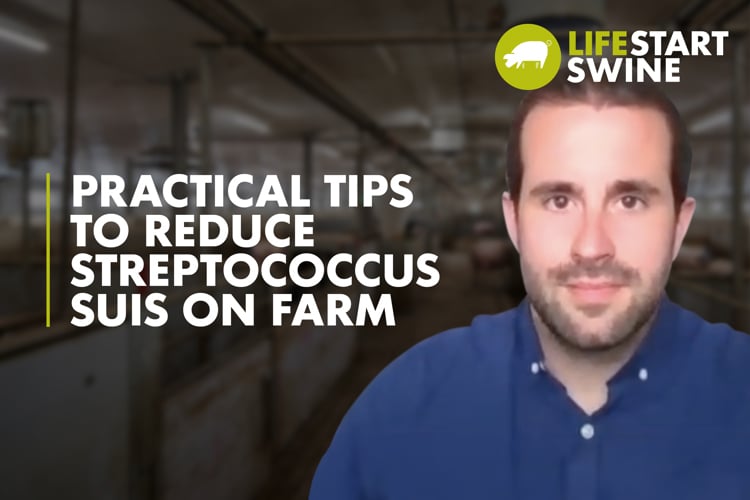
Dr. Lluís Fabà Camats is a veterinarian working as a swine researcher with Trouw Nutrition. Lluís has worked with Trouw Nutrition for three years, and part of his research is focused on Streptococcus suis (S. suis).

“Streptococcus is a very complex disease without an effective or preventive solution,” said Dr. Fabà. “From a nutritional standpoint, we try to support the pig – not to prevent Strep suis itself, but a program type of approach to help the pig handle infection.”
Dr. Fabà further explained S. suis has always been present on farms. It’s a high prevalence, low incidence disease with symptoms mostly recognized by meningitis signs, arthritis and mortality.
“In the past, the disease used to be low incidence and low mortality of up to 1% to 2%, but today this has increased up to 20% to 30% mortality in some outbreaks,” he said. “S. suis is triggered by co-infections, and especially PRRS (porcine reproductive and respiratory syndrome), which appeared during the 1990s and has prompted a lot of bigger outbreaks in the past 20 to 30 years. Beyond co-infections, it is yet not clear what triggers S. suis, but other factors such as lack of colostrum intake, poor management of environmental conditions like ventilation and temperature and gastrointestinal health may play a role.”
Post-weaning diarrhea, poor nutrition and E. coli-related problems will depress piglet health and immune status which could play a role on susceptibility to S. suis. However, these issues have been kept under control by using antibiotics and zinc oxide. But those options are slipping away from many producers.
“Antibiotics are being banned or reduced; growth promoters as antibiotics are being banned; zinc oxide and therapeutic doses are gone in Europe from June 2022,” he explained. “All that is increasing S. suis, and there are no alternatives in the market to control it. There are no vaccines that can sustain an effective immune response and protect pigs after weaning.”
Nutrition program management strategies can help by trying to increase the health status and resilience of pigs during the critically vulnerable time post-weaning. He said research has demonstrated that feed additives can lower the tonsillar load or the oral cavity load of S. suis, which helps the piglet be more resilient during sensitive, stressful times.
Identifying S. suis on-farm
Streptococcus is a gram-positive bacteria with about 29 serotypes, but only some are considered more pathogenic and depend on the world region.
“First things first, know which pathogenic serotype and strains are infecting your farm. Producers should rely on veterinarians to send diagnostic samples out to test and isolate the strains that are most relevant on their farm,” he noted.
Knowing which specific pathogens are on farm allows producers to discard concerns over other diseases that may produce similar neurological issues. If a farm has several outbreaks during the year, it’s important to diagnose all the different pathogens on that farm as well as the different serotypes and strains because the farm may have a bigger problem than just S. suis. It could have an increased susceptibility of other pathogens creating a hot bed for other diseases and co-infections. When S. suis is better characterized and producers are monitoring pathogen load and strains over time, it’s possible to consider all the strategies to address disease on a farm.
When are pigs at their highest risk of getting Strep?
“There's clearly a susceptibility window related to immunity when pigs are most vulnerable to S. suis,” said Dr. Fabà.
Research shows that clearance of the maternal antibodies from the sow drops about day 18 of life which is right before weaning. Self-developed antibodies are produced by the pig about two to three weeks post-weaning, leaving a gap of several weeks when pigs are unprotected while also under a great deal of stress.
“As I mentioned before, co-infections play a role, like influenza and PRRS, and are described to be very significant for S. suis. Other factors more related to nutrition, E. coli, diarrhea and low gut health can also trigger strep and keep in mind that lack of zinc oxide and antibiotic use will play a key role too,” he said. “The last factor is the time of year. Large differences between the day and night temperature are associated to poor management of ventilation and air quality, which can influence S. suis susceptibility.”



